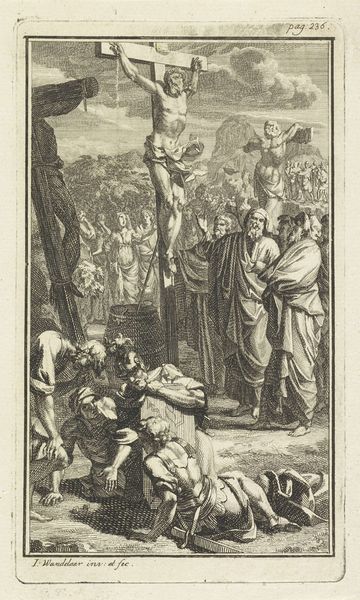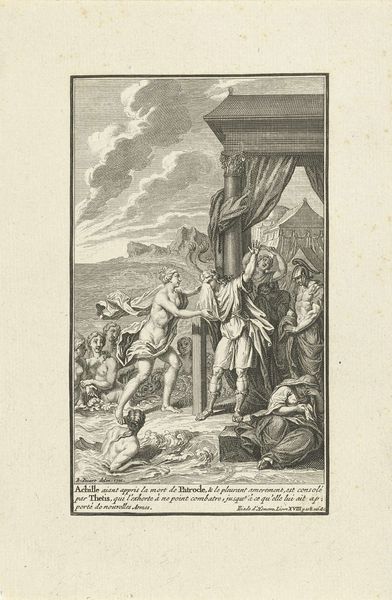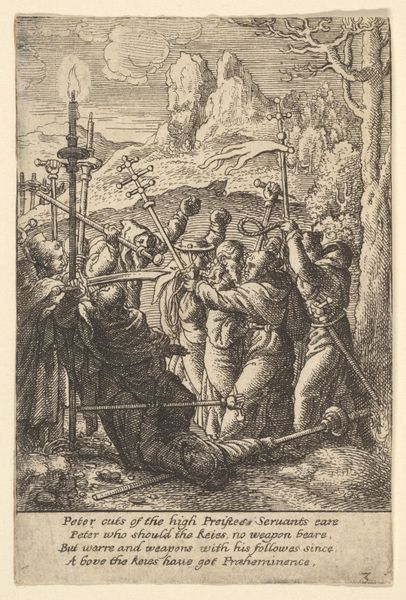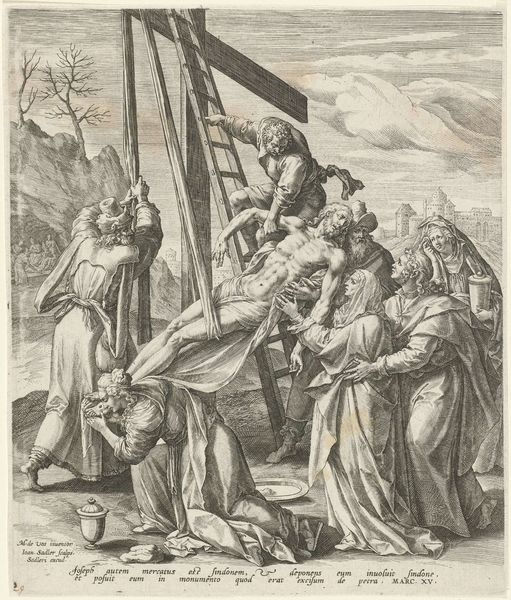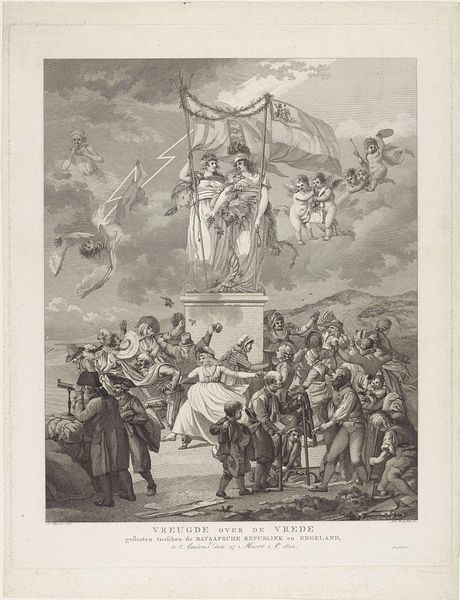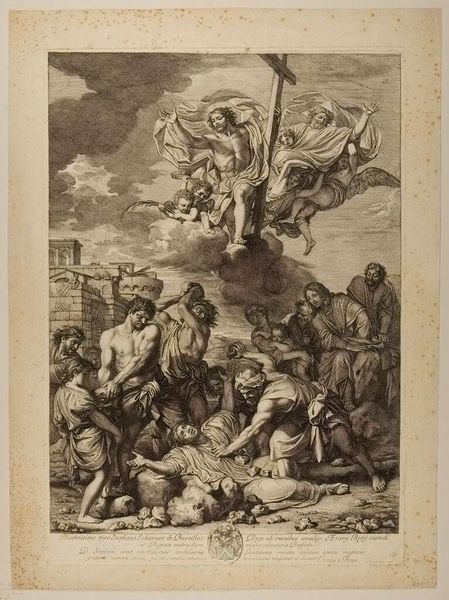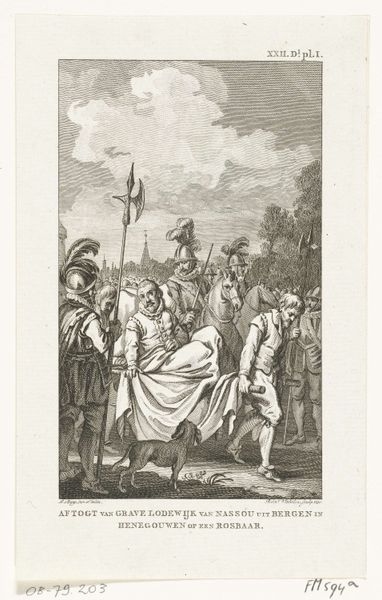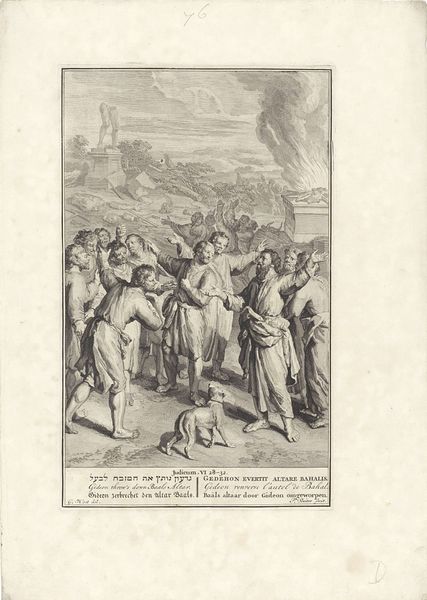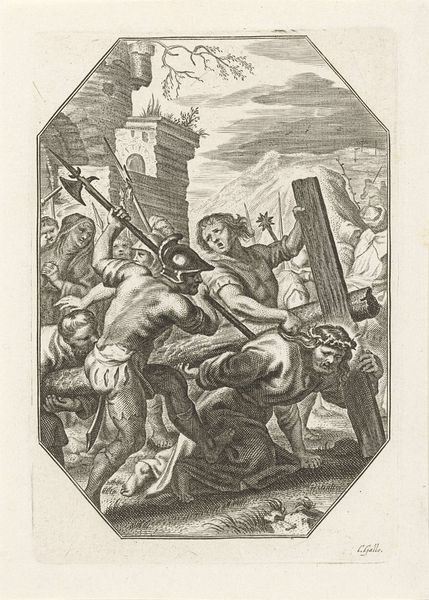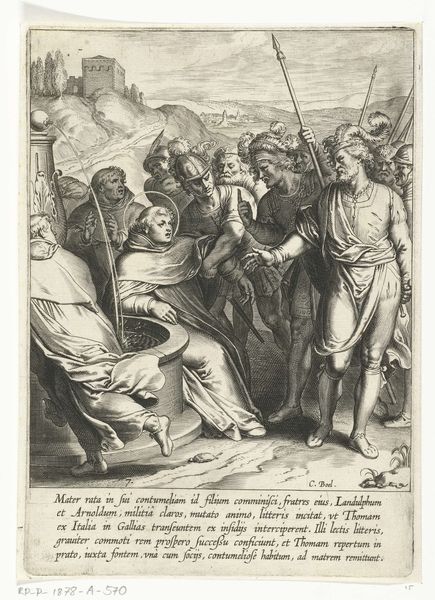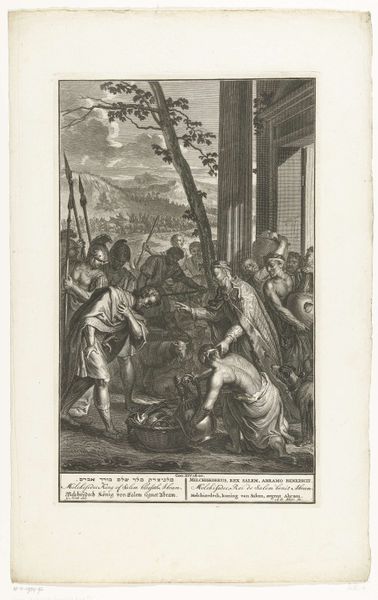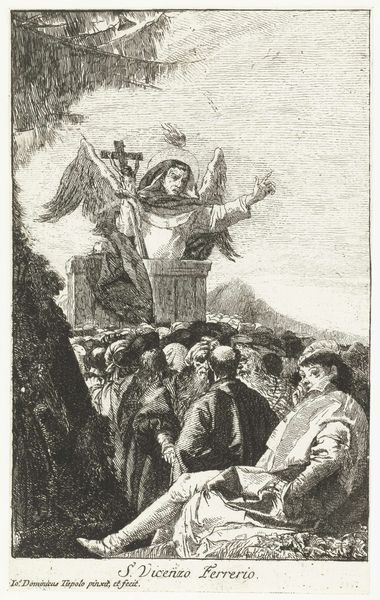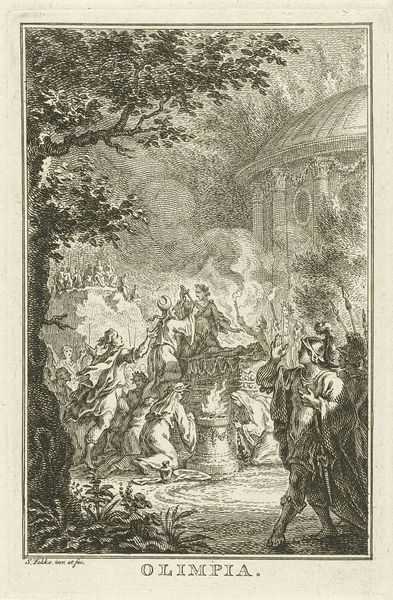
print, engraving
#
baroque
# print
#
landscape
#
figuration
#
history-painting
#
engraving
Dimensions: height 201 mm, width 139 mm
Copyright: Rijks Museum: Open Domain
Editor: This is Nicolaes de Bruyn’s “Kruisdraging,” or “Bearing of the Cross,” an engraving from 1618, housed at the Rijksmuseum. It has a sorrowful mood. What historical or social stories do you see interwoven here? Curator: What strikes me is how this print makes the suffering of Christ a very public spectacle. Consider how this imagery historically functioned – and still functions – as a means to consolidate power and enforce social norms. The crowd here isn't just witnessing an event; they're participating in a ritual, a reaffirmation of a specific power dynamic. Who is absent? Editor: I see mostly men. And the few women are kneeling and appear distressed. Are you saying this is less about religious faith and more about control? Curator: I’m saying that power and religion are always intertwined, and we can't ignore the political dimensions of religious art. Notice how the composition emphasizes Christ's isolation, making him vulnerable. The landscape almost dwarfs him. Do you think this reinforces his helplessness, or does it perhaps suggest something about humanity's relationship with the divine, especially during periods of conflict such as the 1600's in the Low countries? Editor: I hadn't considered that. So, even religious art can be a commentary on social justice, or lack thereof. Curator: Precisely. It's a reminder that art is never created in a vacuum, and we must engage with these power structures if we want to really grapple with the work.
Comments
No comments
Be the first to comment and join the conversation on the ultimate creative platform.

